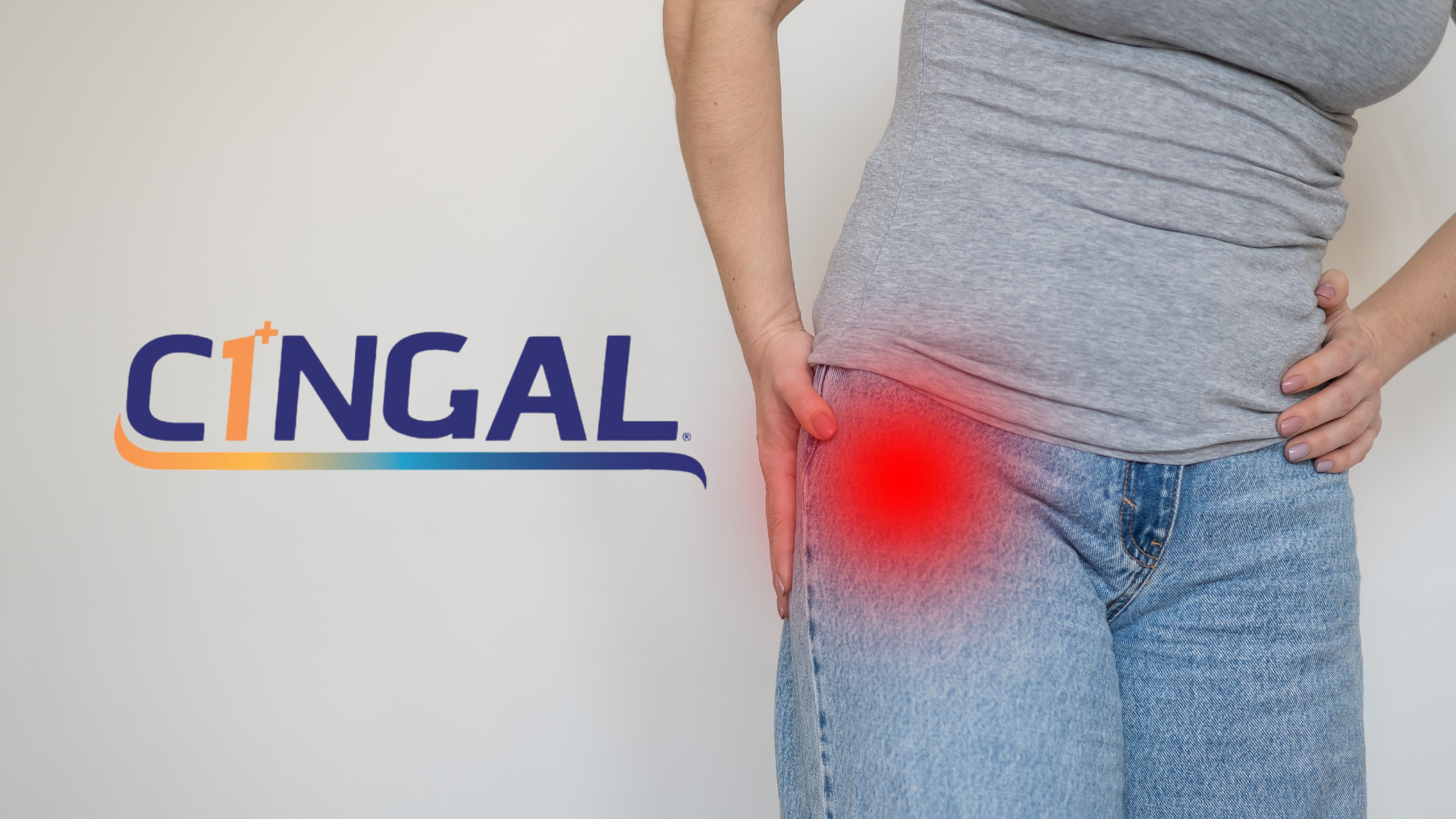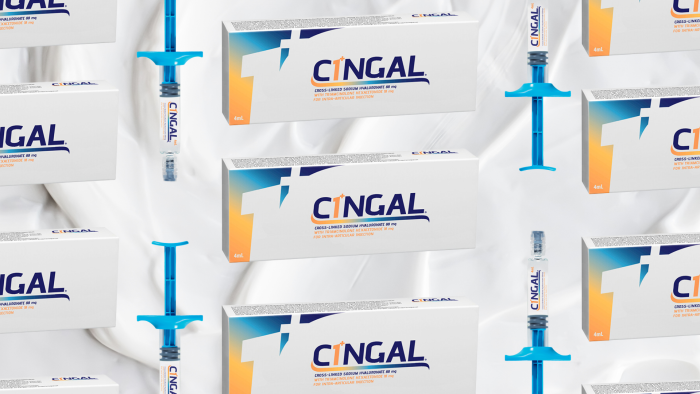SHARE THIS ARTICLE

Cingal
Understanding Cingal Injections For Hip Pain: Everything You Need To Know
Feb 14, 2024
The World Health Organization (WHO) recently reported that the number of individuals affected by osteoarthritis (OA) worldwide increased by 113%. In 2019, statistics show that around 528 million people in the world are suffering from this degenerative disease.
Though this disease is relatively common in the knees, OA can also affect the hips. More than 300 million people living with OA experience moderate to severe pain that could be resolved by undergoing rehabilitation. The most common way to address OA in the hips or knees can be through surgery, but it may not be enough to provide lasting relief from pain and stiffness.
Cingal injections are cutting-edge therapeutic and noninvasive options for individuals suffering from hip pain. This article will dive deep into understanding the aspects of Cingal injections for hip pain, including their safety profile and who benefits the most from this treatment.
Key Takeaways
- Cingal injections offer a multifaceted approach to alleviating hip pain and improving joint function through the harmonious blend of hyaluronic acid and corticosteroids.
- Patient selection for Cingal injections involves careful consideration of the individual’s hip condition, medical history, and response to previous treatments.
- Healthcare professionals, including physicians, nurses, and therapists, play integral roles in delivering and supporting Cingal injections as part of comprehensive orthopedic care.
- Loved ones can provide valuable support to individuals undergoing Cingal injections by offering empathy, encouragement, and understanding of treatment options.
What are Cingal Injections?
Cingal injections mix hyaluronic acid with a powerful steroid to tackle joint pain. Though it is commonly used to treat knee osteoarthritis (OA), doctors can also give Cingal to patients experiencing OA in the hips.
It leaps into action quickly, providing significant pain relief that can stick around for half a year—all from just one shot.
It is famous in orthopedic medicine as the first combo treatment approved that packs cross-linked hyaluronic acid and a steroid powerhouse in every injection.
Mechanism of Action
Cingal is well-known in orthopedic medicine as the first approved combination treatment that packs cross-linked hyaluronic acid and a steroid powerhouse in every injection.
Hyaluronic acid (HA), known for its lubricating and cushioning properties, helps reduce friction within the hip joint, easing pain and improving mobility. On the other hand, a steroid called triamcinolone hexacetonide works to mitigate inflammation and alleviate discomfort, complementing the effects of the HA.
Doctors put Cingal right into the space inside the hip joint using a needle, so the medicine goes straight to where it’s needed.
Who Can Benefit from Cingal Injections?

Cingal injections are designed for knee and hip joint pain caused by osteoarthritis. Patients must meet specific standards to qualify for this treatment.
- Assess the severity of osteoarthritis symptoms: Patients with moderate to severe joint pain or stiffness in the hip may be good candidates.
- Consider previous treatments: Ideal candidates often have tried other therapies like pain medication or physical therapy without enough relief.
- Evaluate overall health: A patient’s general health and absence of certain medical conditions can influence their eligibility for Cingal injections.
- Check for allergies: Cingal contains hyaluronic acid. Ensure patients have no known allergies to this substance or other injection components.
- Determine patient expectations: Patients should understand that Cingal injections aim for symptomatic relief, not a cure for osteoarthritis.
- Examine joint structure: Confirm that the hip joint’s structure is suitable for injection. Severe deformities may limit the effectiveness of Cingal.
Discuss age and activity level: While age is not a strict factor, activity levels and how they affect hip function are important considerations.
Understanding the Safety and Side Effects of Cingal Injections

Cingal injections have demonstrated a favorable safety profile in clinical trials, with a low incidence of adverse events. But, like all treatments, they have side effects to consider.
- Pain or achiness in the joint: After a Cingal injection, you might have an achy feeling or experience pain where the shot was given.
- Swelling: The area around your hip or knee might get swollen shortly after the treatment.
- Rash: Some people may see a rash after the injection, causing temporary itchiness.
- Bruising: Similar to other injectables, Cingal can cause bruising in and around the injection site.
- Skin thinning or color change at the injection site: Though rare, it can happen, and the skin at the injection site will look different.
All of these side effects and reactions are considered mild and short-lived. Patients should give the treated joint a few days to heal. Usually, the side effects should have cleared up by then.
If these reactions persist, patients should see their doctor immediately.
Cingal Injections
Delving into the roles and impacts of this targeted treatment, professionals across healthcare, like doctors, nurses, or physical therapists, can uncover strategies to amplify patient outcomes. Let’s explore their unique perspectives on its application.
Relevance to Physicians
For physicians specializing in orthopedic care, Cingal injections represent a valuable addition to their treatment options for hip pain. Cingal combines corticosteroids with hyaluronic acid, presenting an effective treatment option for osteoarthritis that may improve patient outcomes.
Furthermore, understanding the mechanics behind Cingal can help doctors decide when it’s the best choice for care. This treatment offers healing effects and up to six months of relief from joint pain.
Compared to other treatments, Cingal may be superior and provide better results.
Relevance to Nurses
As physicians play their part in managing hip pain with Cingal injections, the roles of nurses become crucial. They must understand how the procedure works before and after to offer top-notch care and instruction.
Nurses also spend more time with patients than doctors do, which means they are vital in spotting early signs of trouble like infection or tissue harm. They also help by assisting physicians during the injection and teaching patients the proper aftercare instructions.
Good support from nurses can make a big difference to someone getting this kind of help for their hip pain.
Relevance to Therapists
As nurses play a vital role in patient care, therapists specializing in musculoskeletal health bring another layer of expertise to managing hip pain. For professionals looking at new ways to help their patients, Cingal injections offer an exciting option.
With careful study of clinical trials, therapists can gauge both the safety and success of these injections in treating hip discomfort due to cartilage loss or osteoarthritis.
Moreover, this knowledge lets them provide better advice on whether Cingal might be suitable for someone with hip pain.
Supporting Loved Ones Through the Cingal Injection Journey
Assisting someone through their Cingal injection treatment requires empathy, patience, and an informed perspective. It’s about being there, offering a listening ear or a comforting presence, as they navigate the physical and emotional aspects of managing hip pain.
Here are other ways to ensure that your loved one suffering from hip pain gets the support they need.
- Educate yourself on Cingal injections: Knowing details about the procedure and recovery can help you answer questions and ease worries. You can also look for Cingal hip injection reviews and patient testimonials who share how much their life has improved after this treatment.
- Be there for doctor visits: Your presence can bring calm and show solidarity to your loved one seeking Cingal treatments.
- Help manage expectations: Getting Cingal injections can be costly, and financial concerns may add to your loved one’s stress. It’s also vital to understand that Cingal isn’t meant to cure osteoarthritis in the hips.
- Research the best clinics with fair prices: Cingal treatments may vary depending on several factors. Help your loved one look for places that offer Cingal injections within their budget.
- Listen actively to their concerns: When getting a treatment like orthopedic injections, it’s normal for patients to have fears or worries. By being attentive, you can help calm their fears.
- Offer support post-injection: As your loved one is healing from the treatment, offering help with daily tasks can make recovery smoother.
- Keep track of post-treatment instructions: Encourage your loved one to follow the doctor’s orders closely for the best outcome of their hip pain treatment.
- Maintain patience: Healing takes time. Every person’s body responds differently to treatments like Cingal, so it’s best to stay by your loved one’s side so they know they are not alone on this journey.
Conclusion
Cingal injections are a promising option for people who suffer from hip pain due to osteoarthritis. By combining hyaluronic acid and triamcinolone hexacetonide, these shots provide both quick and long-term relief, as well as reduce inflammation and improve joint function.
However, like any treatment, Cingal injections have some risks and side effects that patients and practitioners should be aware of. Therefore, proper knowledge and care before, during, and after the procedure is essential.
Whether you are a patient or a caregiver, understanding how Cingal injections work can help you make an informed decision and improve your quality of life. Cingal injections are a medical solution and a way to restore mobility and happiness.
About: Since its foundation in 2014, Maylips has earned the trust of over 2,000+ clients worldwide, becoming a pivotal supplier of cosmetic, skincare, and orthopedic products for medical and aesthetic professionals. Our catalog, highlighting the comparison of Cingal vs Cortisone for informed treatment choices, offers an extensive range of authentic brand-name products at competitive wholesale prices. Beyond supplying premium products like dermal fillers, botulinum toxins, mesotherapy, and PRP kits, Maylips is dedicated to being your partner in success, ensuring high-quality customer service and support in achieving your medical and aesthetic objectives.
FAQs
1. What’s a Cingal injection?
A Cingal injection is a treatment that blends the powers of hyaluronic acid (HA) and a corticosteroid called triamcinolone hexacetonide to treat the symptoms of osteoarthritis in the joints. HA helps lubricate and cushion the joint, while the corticosteroid reduces inflammation and pain.
2. Does it cost a lot to get a Cingal injection?
The price of a Cingal injection can vary, such as the location of the provider, the insurance coverage, and the availability of discounts or rebates. It is advisable to contact your doctor or clinic to get an accurate estimate of the total cost of the treatment. You should also check with your insurance company if they cover any part of the cost or if they have any preferred providers.
3. Can I get Cingal for my hip pain?
Yes, you can get a Cingal injection for hip pain. Its combination therapy of anti-inflammation and hyaluronic acid can give patients instant and long-lasting relief from joint pain, especially in the hips and knees.
References
Long H, Liu Q, Yin H, et al. Prevalence trends of Site‐Specific osteoarthritis from 1990 to 2019: Findings from the Global Burden of Disease Study 2019. Arthritis & Rheumatology. 2022;74(7):1172-1183. doi:10.1002/art.42089 Fu M, Zhou H, Li Y, Jin H, Liu X. Global, regional, and national burdens of hip osteoarthritis from 1990 to 2019: estimates from the 2019 Global Burden of Disease Study. Arthritis Research & Therapy. 2022;24(1). doi:10.1186/s13075-021-02705-6

